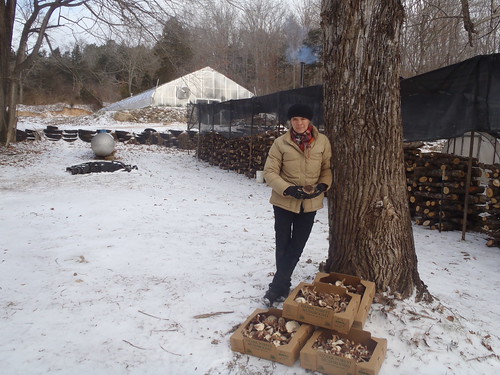
Nicola Macpherson knows the benefits of agroforestry. After all, she has the success of her farm, Timber Farms in the Sink, and her business, Ozark Forest Mushrooms, as proof.
“We have a wealth of forestry and trees. It’s just not fields,” Macpherson said of her family-owned farm Timber about three hours outside of St. Louis. “Agroforestry is a great way to utilize your wood, manage your forest and have a business. A lot of locals are woods people. It’s a good business model for our area.”
This week, Agriculture Deputy Secretary Kathleen Merrigan, unveiled the USDA Agroforestry Strategic Framework (PDF, 886 KB) at the 12th North American Agroforestry Conference. The conference on the University of Georgia’s campus in Athens, Ga., allowed a diverse group of stakeholders, including scientists, students, landowner/practitioners, natural resource professionals, and program administrators, to learn and ask questions about the Agroforestry Strategic Framework.
Agroforestry is a unique land management approach that intentionally blends agriculture and forestry to enhance productivity, profitability, and environmental stewardship. While the application of agroforestry in the United States is not widespread, it can provide new sources of income for farmers, ranchers, and woodland owners, and support USDA’s highest priorities, including rural prosperity, preservation of forests and working lands, sustainable agricultural production, global food security, and safe and nutritious foods for all Americans.
For Macpherson, agroforestry is a key to her success. She grows and sells organically certified wild and gourmet mushrooms to restaurants in the region. She also distributes other agroforestry products from other growers and has found success in diversifying her products to meet area needs.
"It just evolved like that,” she said. “It was sort of a natural evolution to what I was doing. When you sell to restaurant chefs, they will often say, ‘What else do you have?’ or ‘Can you get . . .’ That was the learning curve for me. During the winter months, there is a low period in production, and it just made sense to bring in some products to keep my customers happy. Nature doesn’t always do that for you. So I mix cultivating in the wild with augmenting what other people grow.”

And Macpherson is always on the lookout for other opportunities, taking measured steps to ensure what she is doing is profitable for her company yet good for the land.
“I just put my first little orchard in,” she said. “I didn’t buy hundreds of trees. I’ll just try 25 of each species and see how they do. I have some paw paws and elderberries -- forest fruits. That’s what a lot of people don’t really think about. They think about forest nuts, but not about fruits.”
The USDA Agroforestry Strategic Framework is designed for people like Macpherson to be the guide to advance agroforestry knowledge, practices and assistance to landowners and communities and lays the roadmap to influence the long-term health and sustainability of all lands for future generations. The Framework is built around three simple goals: adoption – increase the use of agroforestry by landowners and communities; science – advance the understanding of and tools for applying agroforestry; and integration – incorporate agroforestry into an all-lands approach to conservation and economic development.
As the Deputy Secretary put it, “the challenges of the 21st century—water shortages, less arable land, competition for energy resources, and climate change—demand that we explore the full range of conservation and production practices. Today’s announcement of the Agroforestry Strategic Framework is just the start of our commitment.”
For additional information about agroforestry and the USDA Agroforestry Strategic Plan, please click here or contact the USDA National Agroforestry Center at (402) 437-5178.
